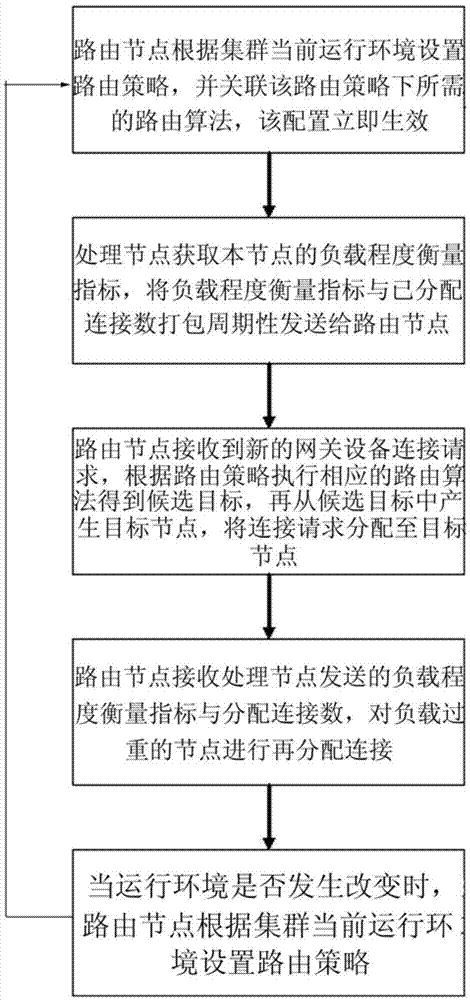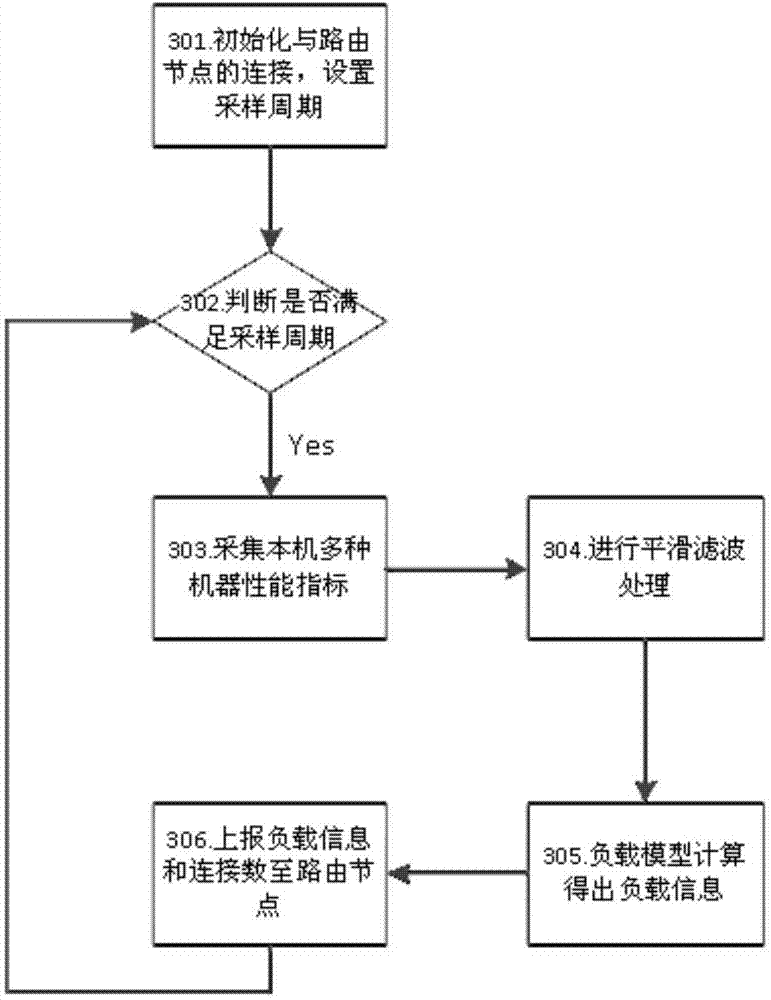Self-adaptive load balance scheduling mechanism for internet-of-things device access processing platform
An Internet of Things device and adaptive load technology, applied in the field of computer networks, can solve the problem that a single routing algorithm cannot be applied to all scenarios, and achieve the effects of avoiding limitations, maintaining dynamic load balancing, and clear division of labor
- Summary
- Abstract
- Description
- Claims
- Application Information
AI Technical Summary
Problems solved by technology
Method used
Image
Examples
Embodiment 1
[0036] Embodiment 1: as figure 1 As shown, the adaptive load balancing scheduling of the present invention is realized by routing nodes and processing nodes. The routing nodes are responsible for the scheduling and distribution of new device connection requests and the load balancing among cluster nodes. The processing nodes are responsible for real-time monitoring of the load status of the nodes and performing local Service processing of all access devices of the node. When the gateway device is connected to the platform, the routing node is responsible for scheduling and assigning to a certain processing node for data and business processing. When the cluster load is unbalanced, the routing node is responsible for migrating the device connection on the heavier-loaded node to other lighter-loaded nodes. processing on the processing node.
[0037] Such as figure 2 As shown, the adaptive load balancing scheduling mechanism for the Internet of Things device access processing ...
PUM
 Login to View More
Login to View More Abstract
Description
Claims
Application Information
 Login to View More
Login to View More - R&D
- Intellectual Property
- Life Sciences
- Materials
- Tech Scout
- Unparalleled Data Quality
- Higher Quality Content
- 60% Fewer Hallucinations
Browse by: Latest US Patents, China's latest patents, Technical Efficacy Thesaurus, Application Domain, Technology Topic, Popular Technical Reports.
© 2025 PatSnap. All rights reserved.Legal|Privacy policy|Modern Slavery Act Transparency Statement|Sitemap|About US| Contact US: help@patsnap.com



